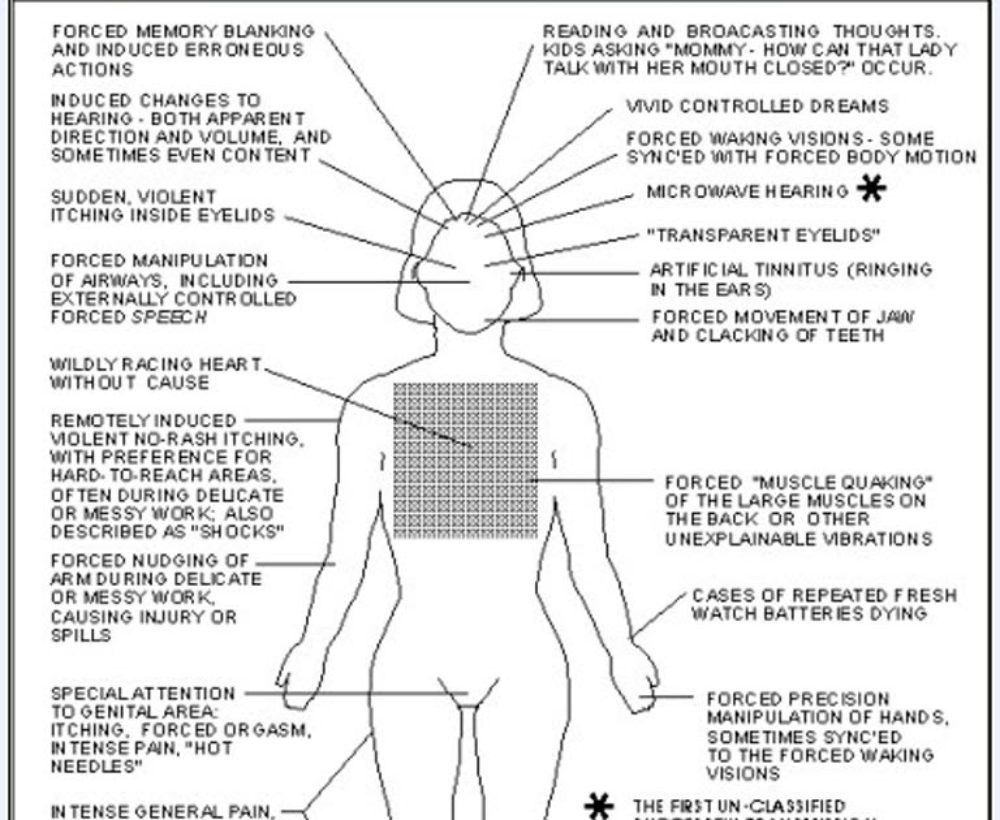The following media files are intended for public access. Please contact A. Zettl or K. Jensen for permission before reproducing any of these images, videos, or audio files or alterations of them. All rights reserved ©2007.
Introduction
We have constructed a fully functional, fully integrated radio receiver, orders-of-magnitude smaller than any previous radio, from a single carbon nanotube. The single nanotube serves, at once, as all major components of a radio: antenna, tuner, amplifier, and demodulator. Moreover, the antenna and tuner are implemented in a radically different manner than traditional radios, receiving signals via high frequency mechanical vibrations of the nanotube rather than through traditional electrical means. We have already used the nanotube radio to receive and play music from FM radio transmissions such as Layla by Eric Clapton (Derek and the Dominos) and the Beach Boy’s Good Vibrations. The nanotube radio’s extremely small size could enable radical new applications such as radio controlled devices small enough to exist in the human bloodstream, or simply smaller, cheaper, and more efficient wireless devices such as cellular phones.
Videos
If you use any of the following videos, please include the credit “Courtesy Zettl Research Group, Lawrence Berkeley National Laboratory and University of California at Berkeley.”
 |
A high resolution transmission electron microscope allows us to observe the nanotube radio in action. We have recorded four videos from the electron microscope of the nanotube radio playing four different songs. At the beginning of each video, the nanotube radio is tuned to a different frequency than that of the transmitted radio signal. Thus, the nanotube does not vibrate, and only static noise can be heard. As the radio is brought into tune with the transmitted signal, the nanotube begins to vibrate, which blurs its image in the video, and at the same time, the music becomes audible. The four songs are Good Vibrations by the Beach Boys, Largo from the opera Xerxes by Handel (this was the first song ever transmitted using radio), Layla by Eric Clapton (Derek & the Dominos), and the Main Title from Star Wars by John Williams.
Good Vibrations (Quicktime, 8.06 MB) |
 |
This simulation shows the electric field surrounding the nanotube radio during radio operation. Notice how the field is strongest at the tip of the nanotube and how the field varies as the nanotube vibrates. This effect allows the nanotube radio to demodulate radio signals.
Nanotube radio simulation movie (Quicktime 15.3 MB) |
Still Images
If you use any of the following images, please include the credit “Courtesy Zettl Research Group, Lawrence Berkeley National Laboratory and University of California at Berkeley.”
 |
Over the past century, radio has shrunk dramatically from the wooden “cathedral” style radios of the 1930s to the pocket-sized transistor radios of the 1950s and more recently to the single-chip radios found in cell phones and wireless sensors. Continuing this trend, we have further miniaturized the radio by cleverly implementing multiple radio functions with a single component, the carbon nanotube. This nanotube radio is over nineteen orders-of-magnitude smaller than the Philco vacuum tube radio from the 1930s!
Nanotube radio timeline and size comparison1,2 (TIFF 22.1 MB) |
 |
Images, taken by a transmission electron microscope, show a single carbon nanotube protruding from an electrode. This nanotube is less than a micron long and only ten nanometers wide, or 10000 times thinner than the width of a single human hair. When a radio wave of a specific frequency impinges on the nanotube it begins to vibrate vigorously. An electric field applied to the nanotube forces electrons to be emitted from its tip. This electrical current may be used to detect the mechanical vibrations of the nanotube, and thus listen to the radio waves. (The waves shown in this image were added for visual effect, and are not part of the original microscope image.)
Nanotube radio tower (TIFF 26.0 MB) |
 |
This simulation shows the electric field surrounding the nanotube radio during radio operation. Notice how the field is strongest at the tip of the nanotube and how the field varies as the nanotube vibrates. This effect allows the nanotube radio to demodulate radio signals.
Nanotube radio simulation (TIFF 1.45 MB) |
Audio
If you use any of the following audio files, please include the credit “Courtesy Zettl Research Group, Lawrence Berkeley National Laboratory and University of California at Berkeley.”
| Layla by Eric Clapton (Derek & the Dominos) was the first song played on the nanotube radio. The entire received song may be downloaded below. Though there is a significant amount of static noise, the song is easily recognizable. All of this was accomplished with none of the external circuitry to filter or process the signal typically found in macroscopic radios.
Layla (entire song) (WAV 2.82 MB) |
Acknowledgements
This work was supported by the US National Science Foundation within the Center of Integrated Nanomechanical Systems and by the US Department of Energy.
References
[1] The Philco and Regency radios were photographed by Gregory Maxwell and are subject to the GNU Free Documentation License as described here.
[2] The Smartdust image was published in B. A. Warneke, et al, Proc. IEEE Sensors, vol. 2, 2002, pp. 1510.
Last modified: Fri Nov 09 12:22:16 Pacific Standard Time 2007
Podcast: Play in new window | Download


